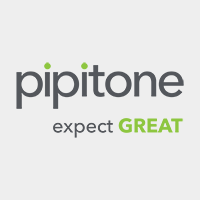Don Hewitt, the revered news man and creator of “60 Minutes”, managed some of the best and brightest journalistic minds of our time. Some might say he managed some pretty massive egos, too, with the likes Mike Wallace, Harry Reasoner and Ed Bradley. Despite the tremendous talent that reported to him, however, his simple direction remained constant for more than 40 years: “Tell me a story.” In fact, his book is aptly titled, “Tell Me a Story: Fifty Years and 60 Minutes in Television.” Few could argue that the reason “60 Minutes” is now in its 45th year is because its correspondents stick to that simple four-word creed.
In practicing media relations for 15 years, I’m still fascinated by the elements of what makes a great news story. As a PR guy, however, I still find myself struggling to explain to clients that in order for their media relations strategy to work and for their product or service to become news, they need to go back to Mr. Hewitt’s advice, or for that matter, the words my four-year-old daughter says every night when I’m tucking her in – “Tell me a story.”
Media relations isn’t rocket science, but it requires PR practitioners and clients to ask themselves some fundamental questions before they embark on a media relations effort: Is the story I’m proposing worth telling in its current form? Is this story I’m pitching one that my customers would want to read? Is this a story that I would stop and read if I were paging through a magazine or browsing a website? If the answer to any of these questions is no, then you need to re-evaluate the elements of your story and schedule a rewrite.
The Elements of a Good News Story
Sometimes going back to the basics is the best course of action. According to the college textbook,News: Reporting and Writing, there are eight elements that make a news story a good story.
Impact – How many people are affected by your product, service or initiative? If there’s not some human impact, then what's the point? Sometimes in a B2B media relations strategy, this can be hard to articulate and personalize, but an effort must be made. Can you tell a customer’s story? How about a story about life before your product or service existed? If your product or service impacts thousands of customers let people know and figure out a way to illustrate that impact.
Conflict –Every good story since the beginning of time has conflict. Trying to find the conflict in a media relations pitch can be difficult, but if you can create white hats and black hats (your client or product being the white hat, of course), the better your story will become. I couldn’t sum up conflict any better than this scene from the movie Adaptation (the faint of heart, beware as there is some coarse language here).
Novelty – Something odd, something new, something different, something never done before. The news of the weird exists for a reason; people like variety in their stories. Find your quirk or oddity—what makes you different— and exploit it.
Prominence – Names make news. The bigger the name, the bigger the news. Is there some way to attach your story to a well-known subject matter expert or independent organization? Again, this can be difficult in the B2B space, but every industry has its rock stars. Can you somehow get yours to endorse, complement or at least validate your message?
Proximity – News that’s closer to home or within a community of professionals is certainly going to garner more coverage than something that is not. In B2B, media proximity can mean news related to a community within an industry. For example, one of our clients’ communities consists ofarchitects and contractors. So, their news is local in the sense that it’s a close-knit community that shares common interests and needs.
Timeliness – News should be new. With social media and 24/7 cable and Internet news outlets, new is instantaneous. While this seems obvious, it’s important to understand that any story has a shelf life. With trade publications, the window for new news is still fairly wide, but as print publications continue to shrink and the trend toward digital increases, the window is closing fast.
Engagement – With social media, no longer is communication a one-way street for reporters. As storytellers, we need to know that any story published nowadays may spark some dialogue—good and bad. Be prepared to defend your story and engage with your audience. Who knows? Another story—or a new customer—might emerge from the dialogue created.
Solutions – According to News: Reporting and Writing, scholars and audiences alike complain that journalists too often report problems and controversies without offering solutions. When writing or pitching a story, don’t be afraid to offer an expert point of view on how to solve the problem. Expert opinion often leads to audience engagement.
Now you know the rest of the story
Paul Harvey was famous for summing up his news accounts with, “Now you know the rest of the story.” But before he got to that tag line, he practiced that four-word phrase that Mr. Hewitt advised his reporters and that every child says before bedtime, “Tell Me a Story.” Try it out for your media relations strategy and see if it leads to more ink or pixels—and prospects
About the Author:
Scott develops and executes traditional media relations and social media campaigns for a wide range of clients. As an account supervisor, Scott draws on his 15 years of experience in both agency and corporate environments to help seamlessly integrate public relations into multi-faceted marketing campaigns. Scott is a graduate of West Virginia University, where he received a bachelor of science degree in journalism.
